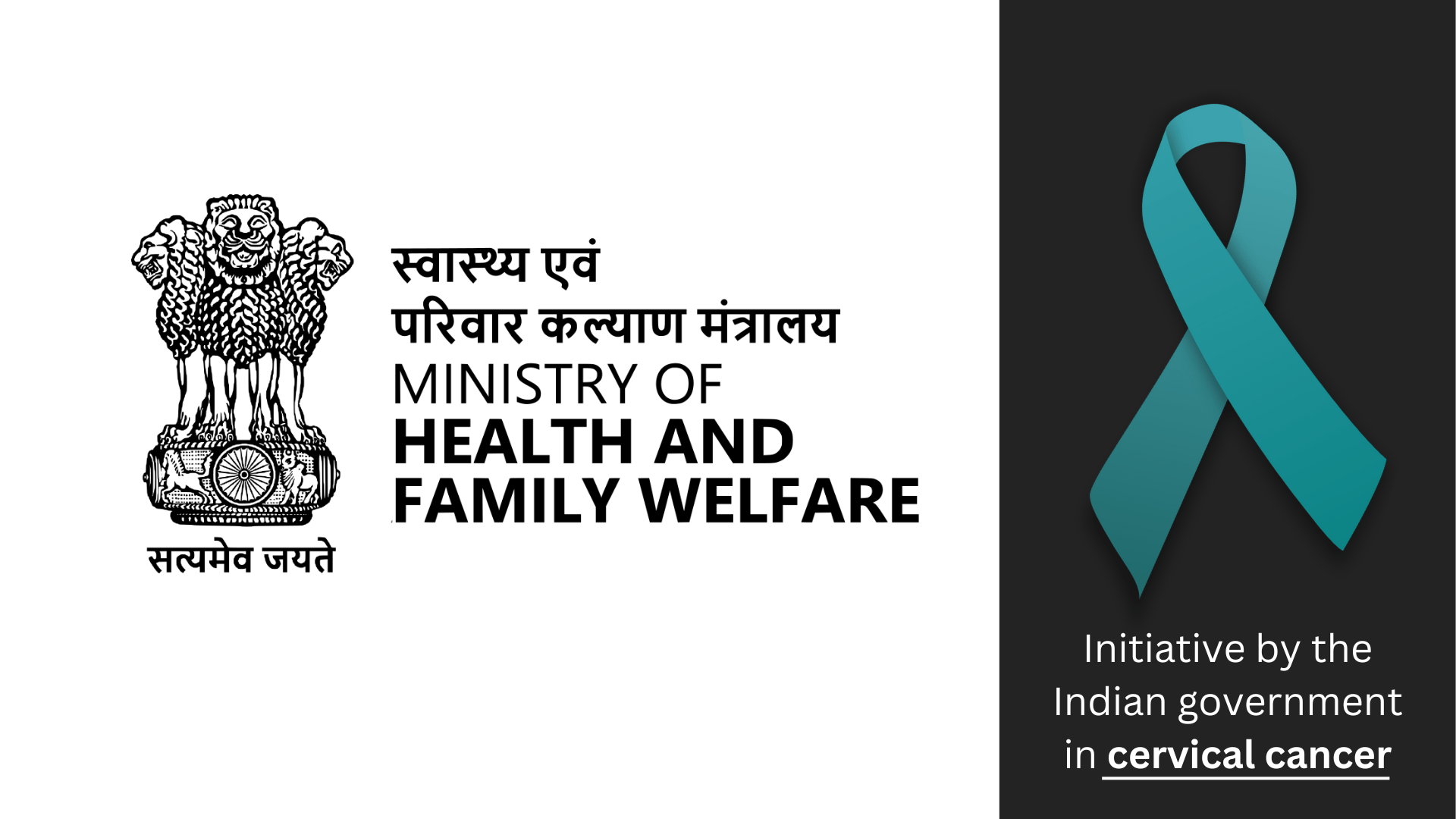In India, where cervical cancer continues to be a leading cause of female mortality, government intervention plays a crucial role in supporting and empowering patients navigating this challenging journey. From financial aid to awareness campaigns, various schemes and programs offer a lifeline to those battling the disease. This blog delves deep into the available resources, exploring the statistics, the specific offerings for cervical cancer patients, and the broader support system for cancer patients in general.
Statistics Of Cervical Cancer
According to Globocan 2020, the global incidence of cervical cancer in 2020 reached 604,100 new cases, with 341,831 deaths attributed to this malignancy. In India, cervical cancer constituted 9.4% of all cancers and accounted for 18.3% (123,907) of new cases in 2020. Despite a significant 39.7% decrease in the age-standardized incidence rate of cervical cancer from 1990 to 2016, it remains one of the more prevalent cancers in India.
Additionally, it stands as a leading cause of cancer-related deaths among women in low- and middle-income countries. Notably, cervical cancer is identified as the second leading cause of cancer deaths for females in 12 Indian states.
Connection Of Cervical Cancer And HPV
A robust association exists between cervical cancer and the human papillomavirus (HPV). HPV, a prevalent sexually transmitted infection, has the potential to impact the skin, genital area, and throat. Almost all sexually active individuals will encounter HPV at some point, often without presenting noticeable symptoms.
Typically, the immune system effectively clears HPV from the body. However, in instances of persistent infection with high-risk HPV strains, abnormal cell development may occur, ultimately leading to cancer. It’s crucial to note that 95% of cervical cancers result from untreated, persistent HPV infection of the cervix.
Government Intervention:
Recognizing the dire need for intervention, the Indian government has implemented various schemes and programs to address the financial, emotional, and logistical challenges faced by cancer patients. Some of the key initiatives include:
World Health Organization (WHO) Guidelines
In May 2018, the World Health Organization (WHO) issued a decisive call to eliminate cervical cancer as a global public health concern. The approach involves widespread implementation of HPV vaccination, comprehensive screening, early diagnosis, and effective treatment of cervical pre-cancer and cancer. The initiative gained formal endorsement from the World Health Assembly (WHA) on November 17, 2020, with 194 countries affirming their commitment to this critical endeavor despite the challenges posed by the ongoing COVID-19 pandemic.
The global strategy, outlined by WHA, sets ambitious targets for achievement by 2030:
- Ensuring 90% of girls receive full vaccination with two doses of the HPV vaccine by the age of 15.
- Screening 70% of women between the ages of 35 and 45 using high-performance testing.
- Providing treatment for 90% of women diagnosed with cervical pre-cancer and cancer, aiming for a target of fewer than four cases per 100,000 women.
The Indian government has taken several steps to address cervical cancer, including the following:
- National Cervical Cancer Control Program (NCCP): The NCCP was launched in 1975 and is a comprehensive program for the prevention and control of cervical cancer. It aims to provide accessible and affordable cervical cancer screening services to women in the reproductive age group.
- Vaccination Programs: The government has introduced the Human Papillomavirus (HPV) vaccination as part of the universal immunization program to prevent cervical cancer. The HPV vaccine is provided free of cost to girls aged 9-14 years.
- Awareness and Education: The government has focused on creating awareness about cervical cancer and the importance of screening through various media and educational campaigns. This includes educating women about the early signs and symptoms of cervical cancer and the benefits of early detection.
In 2011, the Indian national government initiated a comprehensive program targeting chronic and noncommunicable diseases, specifically focusing on the screening and treatment of cervical cancer. Concurrently, various state governments are actively piloting alternative strategies for the prevention of non-communicable diseases.
The Ministry of Health and Family Welfare, under the Government of India, serves as the primary governing body overseeing the nation’s healthcare sector. In addition to the State and Central Governments, various private sector institutions, NGOs, CBOs, philanthropic organizations, and others actively participate in diverse healthcare initiatives. These entities collectively contribute to delivering a spectrum of healthcare services, encompassing preventive, promotive, and curative measures for the well-being of the population.
Financial Aid for Cancer Patients in India:
Ayushman Bharat Pradhan Mantri Jan Arogya Yojana (AB PMJAY/PM-JAY): This flagship scheme provides comprehensive health insurance coverage for up to ₹5 lakh per family per year, covering treatment for cervical cancer among other listed ailments.
Rashtriya Arogya Nidhi (RAN): Rashtriya Arogya Nidhi (RAN), a central government scheme, provides financial assistance to individuals below the poverty line facing life-threatening diseases, including cancer. Established on January 13, 1997, with an initial contribution of Rs. 5.0 crore, the fund accepts subscriptions from various sources, enjoying income tax exemptions. Covering treatments like cardiology and oncology, it offers financial aid up to Rs. 1.50 lakh to patients in their states/UTs. Cases exceeding this limit are referred to the central government. The Health Minister’s Cancer Patient Fund, part of RAN, extends financial support of up to Rs. 2.5 lakh per patient for cancer treatment at 27 regional cancer centers across India.
Cancer Aid and Research Foundation (CARF): Cancer Aid and Research Foundation (CARF) operates as a registered medical NGO and non-profit charitable organization in Mumbai, India, with a mission to support cancer survivors in leading vibrant, fear-free lives. CARF envisions achieving this by offering research grants, medical equipment, supplies, and humanitarian aid to hospitals and clinics. Dedicated to assisting the underprivileged, CARF provides financial aid for cancer patients, conducts research for improved diagnosis and treatment, supports healthcare facilities with essential resources, and raises awareness about cancer prevention.
Caped (Cancer Patients Aid and Research Foundation) India: Provides financial aid and spreads awareness about cervical cancer, emphasizing early detection and treatment.
Indian Cancer Society-Cancer Cure Fund: The Cancer Cure Fund, a flagship initiative by the Indian Cancer Society, extends financial assistance for treatment to underprivileged cancer patients in India. Supported by dedicated investors contributing to the cause, the fund has positively impacted the lives of numerous patients nationwide, enabling many to resume productive lives post-treatment. Geared towards individuals with an annual income below Rs 4 lakhs, the program operates in 17 hospitals across India, with 80% of beneficiaries hailing from the underprivileged strata of society. Notably, the fund’s efficient processes have significantly reduced treatment abandonment by over 50%, ensuring swift and impactful support for those in need
Jan Aushadhi: In India, a government initiative strives to provide cost-effective healthcare solutions, offering generic anticancer drugs as affordable alternative to the public. Jan Aushadhi scheme significantly reduces the cost of anticancer medications, including drugs like docetaxel, doxorubicin, carboplatin, cisplatin, gemcitabine, oxaliplatin, capecitabine, and etoposide, commonly used in treating cervical cancer. Available under this initiative, these drugs, whether used individually or in combination, cater to various cancer treatments, demonstrating the potential to ease the financial burden of cancer care for patients.
Empowering Cervical Cancer Patients:
1. YouWeCan: YouWeCan, founded by cricketer Yuvraj Singh, is an Indian non-profit organization focused on combating cancer. Established by the cricket icon, himself a cancer survivor, the organization is dedicated to raising awareness, conducting screenings, offering treatment support, and empowering survivors.
YouWeCan actively organizes screening camps in rural areas, addressing oral, breast, and cervical cancers, with a special focus on aiding underprivileged children undergoing cancer treatment. The organization operates under the Bombay Public Trusts Act, 1950, as a non-profit entity.
2. CanSupport: CanSupport, a non-governmental organization, delivers cost-free home-based palliative care services to cancer patients across India. Their dedicated multidisciplinary teams, comprising qualified doctors, nurses, and counselors, visit registered patients at their homes. Services include pain and symptom management, counseling, and emotional support for both patients and their families.
CanSupport secures financial aid for treatments, investigations, medicines, supplies, and equipment resources through government schemes and other channels. Operating in Delhi and five states, including Haryana, Uttar Pradesh, Punjab, and Jharkhand, CanSupport showcases the success of a home-based care model in India for patients with chronic illnesses.
Other Support Programs:
Cervical Cancer Screening Program: The government, through the NCCP, is actively engaged in cervical cancer screening across the country through various methods like Pap smears and HPV testing. Early detection significantly improves treatment outcomes and survival rates.
Palliative Care Services: Recognizing the importance of pain management and symptom control, the government is increasing access to palliative care services for cancer patients, including those battling cervical cancer.
NGOs and Support Groups: A network of non-governmental organizations and support groups across India offer emotional and practical support to cancer patients and their families. They provide counseling, financial assistance, information, and a sense of community during this difficult time.
Several non-governmental organizations (NGOs) and advocacy groups in India are actively involved in supporting cervical cancer patients. These organizations provide a range of services, including financial aid, emotional support, and access to care. Some of the prominent NGOs include:
- Women’s Cancer Initiative – Tata Memorial Hospital: This initiative provides support for various issues related to cervical and ovarian cancers, including financial aid, emotional support, and logistical assistance.
- CanSahayogi Project: This project offers emotional, psychological, and logistical support to cancer patients across multiple centers in India.
India’s Groundbreaking Solution For Cervical Cancer Prevention
Cervavac, developed by the Serum Institute of India, stands as India’s pioneering quadrivalent Human Papillomavirus (qHPV) vaccine against cervical cancer. Positioned for both private and public sectors, it caters to individuals aged 9 to 26. Focused on HPV types 4, 6, 11, 16, and 18, Cervavac exhibits over 90% efficacy in preventing cervical cancers.
Its affordability makes it a viable option, emphasizing routine cervical screening without substituting for it. The vaccine, administered intramuscularly, holds promise in the fight against cervical cancer, marking a significant advancement in healthcare.
Beyond Cervical Cancer:
While the focus of this blog is on support for cervical cancer patients, it’s important to recognize that the government programs and initiatives mentioned above extend to patients battling other forms of cancer as well. From breast cancer to leukemia, these schemes and programs offer a critical lifeline to countless individuals fighting for their lives.
Statistics Showcase the Impact:
Despite the challenges, government intervention has shown promising results. The NCCP has led to a significant increase in early diagnosis and treatment rates for various cancers, including cervical cancer. The PM-JAY scheme has benefited millions of patients across the country, providing them access to quality cancer care.
Conclusion:
Government intervention in India through various schemes and programs plays a crucial role in supporting cervical cancer patients and addressing the broader challenge of cancer care. However, ongoing efforts are needed to improve awareness, increase access, and break the stigma surrounding the disease. By providing a multifaceted support system, we can empower individuals facing this daunting battle and give them a fighting chance to overcome it.
Written By
Aswini PriyaMedical Content Writer
Reviewed By
Dr. AnchalMedico Expert
Last Updated
25 Jan 2024 | 01:50 PM (IST)










